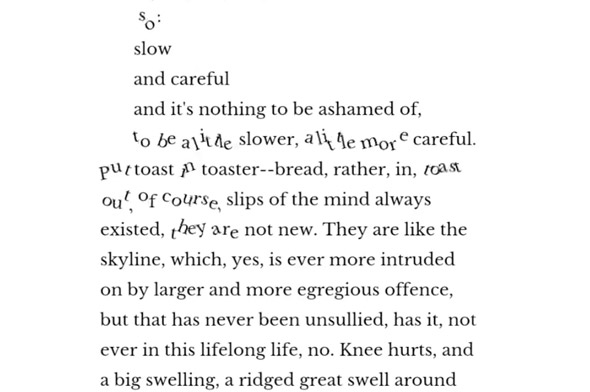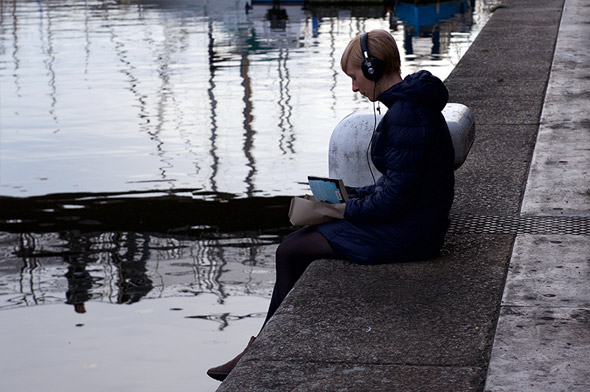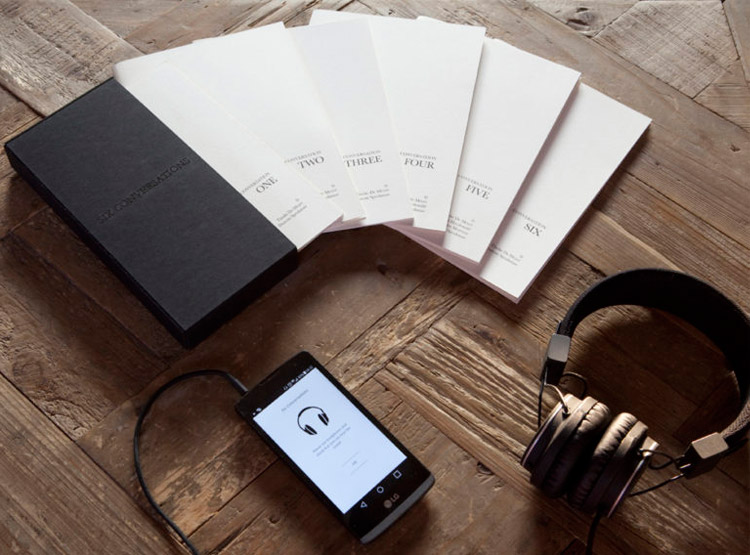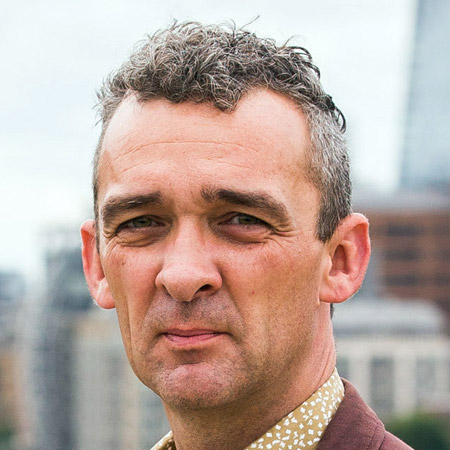The most dangerous myth about digital literature is that it’s expensive to make. That an artist or writer working with new technology has to learn to code in three languages, that experiments in new forms of storytelling are prohibitively difficult.
Here are two truths about innovation, about trying something new:
- You don’t need piles of cash.
- You don’t need to know how to code.
You do need to think, and you need to be prepared to learn, on a steep curve, as you go along.
As Molly Flatt’s superbly satirical invitation to the UK’s Futurebook conference ably illustrates, publishing presently exists in a bubble of its own making. For publishers, digital has become a distribution mechanism, designed to exploit backlists and leverage market share.
By way of contrast, artists the world over are making innovative, experimental digital storytelling that is beginning to build a cogent set of grammars and affordances. Able to think more nimbly and used to operating at the edge of ideas, creative individuals, not publishers, are making the work that is going to define a new literature. There’s a simple reason for this.
Follow me through on this argument:
The novel, the short story, theatre, film, are forms. Forms can be unpacked, and inside them are rules that we’ll call grammars. Narratorial voice, character perspective, the construction of chapters and maintenance of tension. Peripeteia. Anagnorisis. These are devices by which we tell stories. They’re learned by observation and osmosis, by experimentation and craft.
Writers learn these, and then work with them. They tell stories in their own way, and ensure that the rules of storytelling keep developing, keep breaking new ground.
Digital literature - and let’s assume that there is such a thing - requires the same level of attention. Digital literature is different, is not read the same way as a physical text, and has to be written differently too.
The writers in the best position to learn how to write differently are reading this right now. They have ideas, and they’re looking for the right form to apply them in. We all know that every story has been told before, and that our responsibility is to tell it new, that the challenge is to find a way to reach a reader who hasn’t heard it told like that.
This is why digital literature is exciting. This is why you’re reading this.
Do you want more?
Six Conversations, produced by Duncan Speakman and Tineke De Meyer, asks what digital reading, or audio as a delivery system, can offer narratorial voice. The limited edition work comprises six hand bound books accompanied by an app that interleaves content between digital and physical platforms, positioning the reader between two voices; one on the page and one heard in their ears. These voices are responding to one another, and the reader, present in the moment, is caught between them. The pleasure of Six Conversations lies in the variety of content within the overall work. Despite being grounded in a consistent question, each Conversation is different, and each pushes at the edges of what’s possible for digital literature.
'The challenge is to tell stories in ways conventional literature cannot.'
Six Conversations wasn’t made by a mainstream publisher, it was produced by two talented artists working with the tools at hand, and achieves an exceptional standard of design, experience, narrative and execution.
At the other end of the scale, Visual Editions’ collaboration wth Google Creative Labs - Editions at Play - explores how the form of the book might transfer to a digital platform to produce ‘a book that cannot be printed’. We might not have access to Google Labs resources, but we can learn from the work they’ve made.
Three experimental pieces by Reif Larsen, Joe Dunthorne and Alan Trotter* each take steps toward writing fiction for a digital medium. Larsen makes use of Google Street View to tell a Borgesian short fiction, Dunthorne (and Sam Riviere) manipulate the epistolary form to produce poetry. Trotter (a writer who’s website demonstrates he clearly understands the form he’s working in) merges the digital form with his story to produce a book that ‘forgets’ as it is read.

All of these explore the ways in which reading can be different in a digital space, and each responds to the idea of digital literature in a distinct way. They use affordances and aspects of our broader digital literacy to help build a new grammar of storytelling. The challenge, if we’re going to make digital literature a mainstream reality and not remain a niche, is to provoke those shifts in form and content; to tell stories in ways a conventional literature cannot.
Otherwise, I’d suggest, what’s the point?
Which brings me to Ambient Literature, which will, we hope, embody that intention to tell things in new ways. Ambient Literature is a two year research project, funded by the Arts and Humanities Research Council in the UK and run by three universities: Bristol UWE, Bath Spa and Birmingham. We’re working to define an emergent field and show by making, as well as thinking and writing about our subject. We’ve defined Ambient Literature as ‘situated literary experiences, delivered by pervasive computing platforms, responding to the presence of a reader to deliver story’ and while that’s a mouthful, it’s representative of a coherent idea. Site specific experiences allow us to design stories that fix, or respond to a particular location. We know, in other words, where you’re stood, and can accommodate that. A pervasive computing platform is a phone. It might be something other than a phone, but think of it as the smartphone and you’re on the right lines. The reader is, we hope, still the reader. We’re interested in foregrounding story throughout this project, in finding new ways to place the reader within a text.
'We’re interested in producing work that can be read anywhere, not limited to a specific place and time.'
Between now and 2018, we’re commissioning three projects; the first from Duncan Speakman, the second from James Attlee and the third from Kate Pullinger. We’re also making a set of smaller experiments around the edges of these. The second, called ‘yesterday you’re still dreaming’, set out to explore how audio and presence can displace you in time. Could we make you believe that it was a day ago? What this experiment also demonstrated was that there are things readers expect from story that we’re going to have to address. Conventional stories are re-read, and reading is a fluid experience, within which it is permissible, even expected, that a reader will return to an earlier page to reacquaint themselves with details. A twenty minute audio delivery can completely immerse it’s reader within a fiction, but they have a ‘forward-only’ momentum within their story, which makes writing for Ambient Literature a markedly different process than for a short story.

We want to address scale too. Site specific work runs a risk of being exclusive, of remaining niche in terms of audience precisely because of it’s format. We’re interested in how Ambient Literature can counter this problem, and produce work that can be read anywhere, not limited to a specific place and time. Kate Pullinger’s piece, in it’s earliest stages at present, will require a bedroom and a phone. Any bedroom, anywhere, within which the reader will trigger a ghost story. Duncan Speakman is building a memory palace that will transpose sounds and stories from remote sites into the reader’s environment. Taking change (as climate, technology and regeneration) as it’s theme, it’s aim is to produce a resonance between our experience of place and transience, and our connections across the whole planet.
Ambient Literature builds on our previous work and pushes us in new directions. We’re making our process visible, and sharing our learning, and we’ll be inviting the world to read what we make.
*I haven’t discussed Strata, the fourth Edition at Play, because it’s not very interesting, and completely abandons any notion of digital as offering new ways to write. You have to be critical too. Not everything is good.
Tom Abba
Associate Professor: Art & Design, Bristol UWE
SEE PROFILE








